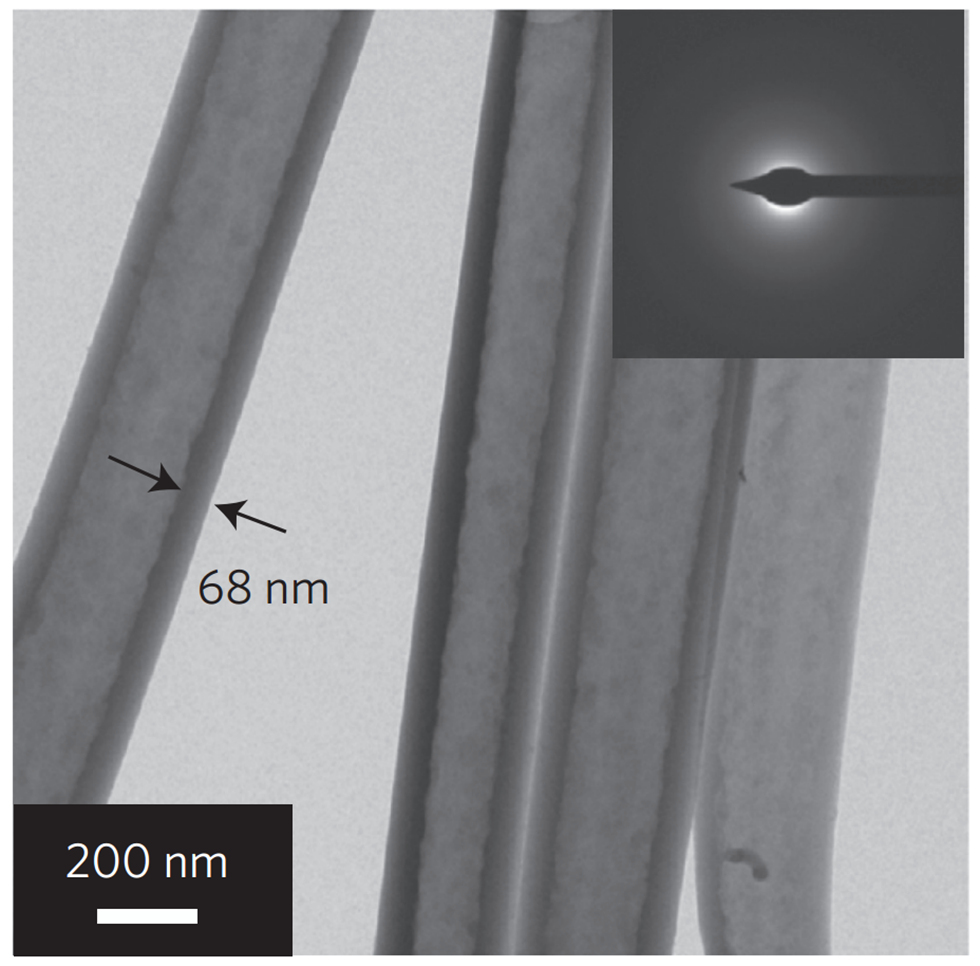High Thermal Conductivity of Chain-Oriented Amorphous Polythiophene


Abstract

Polymers are usually considered thermal insulators, because the amorphous arrangement of the molecular chains reduces the mean free path of heat-conducting phonons. The most common method to increase thermal conductivity is to draw polymeric fibres, which increases chain alignment and crystallinity, but creates a material that currently has limited thermal applications. Here we show that pure polythiophene nanofibres can have a thermal conductivity up to ~4.4 W m–1 K–1 (more than 20 times higher than the bulk polymer value) while remaining amorphous. This enhancement results from significant molecular chain orientation along the fibre axis that is obtained during electropolymerization using nanoscale templates. Thermal conductivity data suggest that, unlike in drawn crystalline fibres, in our fibres the dominant phonon-scattering process at room temperature is still related to structural disorder. Using vertically aligned arrays of nanofibres, we demonstrate effective heat transfer at critical contacts in electronic devices operating under high-power conditions at 200 °C over numerous cycles.
